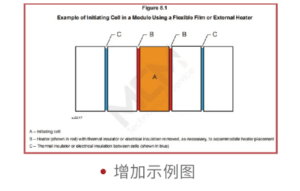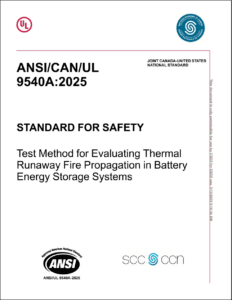On March 12, 2025, Underwriters Laboratories (UL Solutions) officially released UL 9540Aed5:2025. After a year and a half of contentious discussions and negotiations, 28 revisions were discussed and negotiated, with only one not reaching consensus. The remaining 27 revisions were agreed upon and released. This revision clarified additional testing details and clauses. Using module thermal testing as an example, the following key changes were made:
1.If there is a thermal insulation layer or insulating sheet between the battery cells, it needs to be removed before inserting the heating sheet.
2.Added the definition of “thermal runaway propagation”: In the absence of any additional starting mechanism (heating plate, etc.), the energy released by one or more battery cells experiencing thermal runaway is transferred, causing thermal runaway in other battery cells. Exhaust alone is not considered thermal runaway.
3.Clarify the module thermal runaway test termination conditions. If a cell has not previously reached thermal runaway propagation, repeat the test until the other cells are forced into thermal runaway. Only if thermal runaway propagation between cells cannot be prevented by adding additional triggering cells can it be determined that thermal runaway propagation will not occur.
Related other standard developments:
>UL9540B introduces fire (ignition) testing for residential energy storage products. NFPA855, the energy storage product installation standard, will be updated in 2026 to include requirements for large-scale fires.
> UL9540 2025.3.7 released a new version, adding Appendix H – Residential Energy Storage Installation Instructions.
From the Perspective of Revisions to the North American Energy Storage Standards System.Currently, based on the revision trends of the North American energy storage standards system, fire departments and Authorities Having Jurisdiction (AHJs) in North America are paying greater attention to the safety of residential energy storage and the consequences and impacts of thermal runaway, rather than focusing solely on whether thermal runaway occurs during product testing.Manufacturers need to take this into account: while leveraging external designs to meet safety requirements, they must also pay attention to the inherent safety of battery cells.
MCM looks forward to further communication with you to create more possibilities together, please feel free to contact us!








